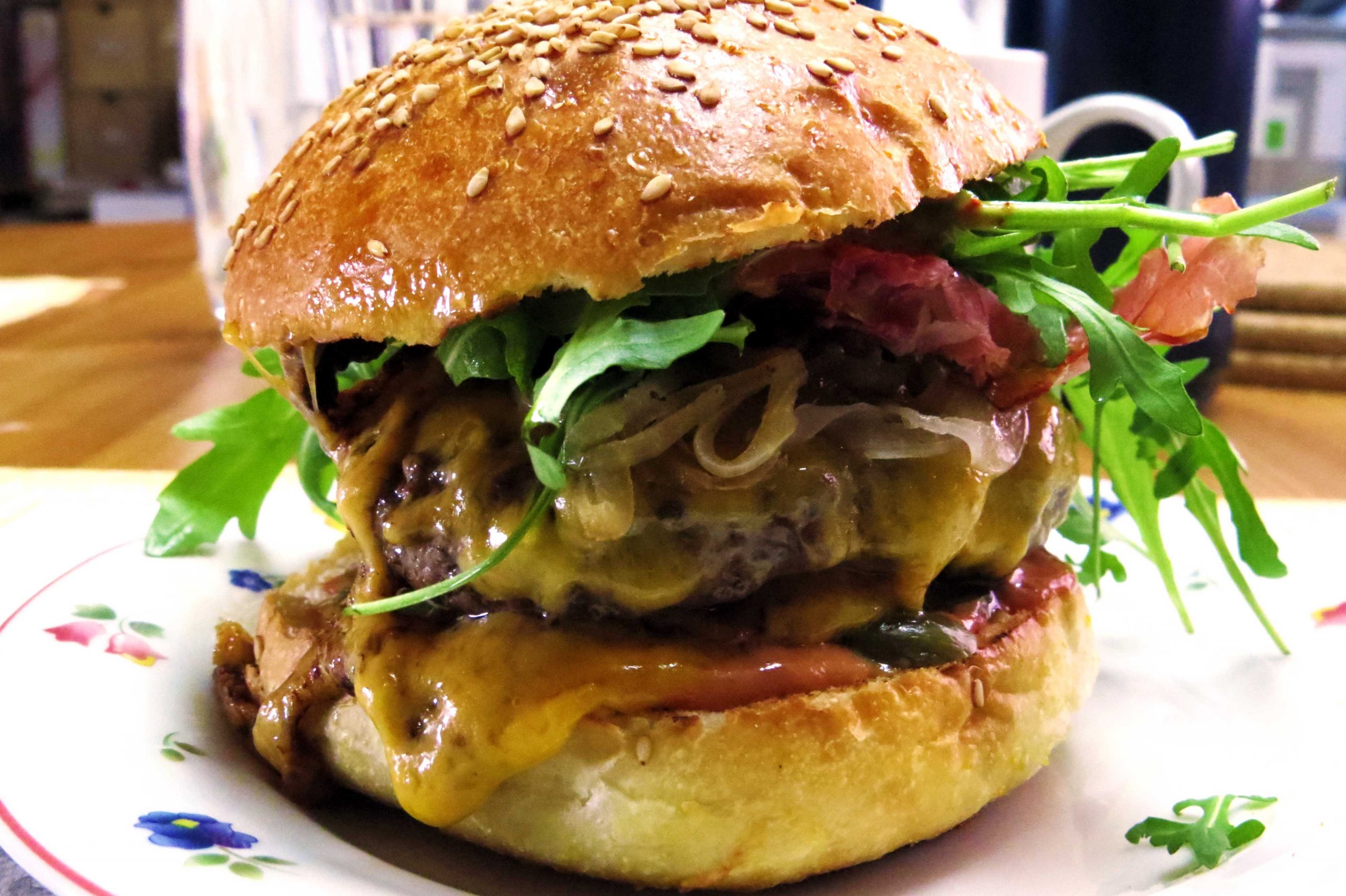The word barbecue originally comes from the Spanish language: the Spanish explorer Oviedo y Valdés, who explored South America in the 16th century, first used the word barbacoa in 1535. The term referred to a wooden framework once used by the indigenous people of South America to slow-cook meat over an open fire: That’s where the term low’n slow comes from – slow because of the slow cooking process and low because the temperatures used in barbecue usually stay below 150 degrees Celsius.
When Spain had colonies in South America in the Middle Ages, slow cooking meat over fire was not only common in South America, but also throughout the Caribbean region.
The Jamaica Jerk has survived to this day: Jamaica Jerk refers to a traditional Jamaican method of preserving meat and cooking it over an open fire. Thus, this method is a forerunner of the American barbecue known today.
South American aborigines
The South American indigenous peoples initially had no pork or beef to cook: they made do with the animals they found in the wild where they lived.
Olaudah Equiano, a pioneer in the fight against the slave trade, made a journey to what is now Honduras in the 18th century: If one follows his stories, he observed indigenous people slowly cooking alligators over smoke. This method made even the toughest piece of meat edible.
The Spaniards were instrumental in bringing pigs to South America: Thus, the Spanish were also involved in the creation of today’s barbecue, which often uses pork.
At first, barbacoa was nothing more than a Caribbean method of preparing meat: it was only when European explorers went out into the world that they came up with the idea of cooking meat slowly over an open fire to make it tasty and tender.
Barbecue is synonymous with southern cuisine.
The culture of barbecue
It did not take long for barbecue to spill over into the English colonies in North America: it is often said that the more self-confident the English colonies became and the more they distanced themselves from their homeland, the more their own culture developed. Barbecue was part of that culture.
Seven years before the signing of the American Declaration of Independence, the first American president George Washington mentioned in his records that he had travelled to Alexandria for a barbecue.
Although the first mentions of barbecue in the United States come from Virginia, the two southern states of North Carolina and South Carolina are still considered the cradle of barbecue: barbecue is synonymous with southern cuisine.
Slaves who arrived in the United States via the Caribbean and worked as cooks on plantations brought barbecue to the USA: the aim was to use not only the tender pieces of meat from an animal, but to process the whole animal. Last but not least, meat maturation methods were not nearly as advanced back then as they are today and barbecue was often the only way to make meat edible.
Barbecue: an institution
From the end of the 18th century onwards, barbecue was more than just a simple way to make meat edible: Barbecue advanced to become an institution in American society. Not entirely dissimilar to the slaughtering feast known from Europe, the barbecue established itself as a special festivity, especially on plantations in the southern states.
Barbecues also played a major role in political events: many politicians held public barbecues to celebrate their political success.
Variations and smoking wood
Barbecue is not a standardised method of preparing meat: barbecue recipes are a dime a dozen and one will hardly manage to try out all the variations. Last but not least, spice recipes and sauce recipes vary so much from region to region that barbecue in South Carolina tastes completely different from barbecue in Texas.
The most classic method is to take a marbled piece of beef or pork (for example, brisket or spare ribs) and smoke it at 100 to 130 degrees. The meat can be rubbed with spices, but often only salt and pepper are used: The smoky flavour of the meat after smoking masks many spice mixtures.
Last but not least, barbecue depends on the type of wood you use: For pork, many barbecue aficionados often use apple wood, while beech wood is particularly popular for smoking beef, among other things. Fruit wood such as pear wood, apple wood or cherry wood have a special place in barbecuing.
People who emigrated from the southern states and moved further west took the tradition of barbecue with them and spread it.
Barbecue and jazz
Barbecuing is no longer done exclusively over an open fire: Many smokers that can be used for barbecue work with wood pellets made from the sawdust of fruit wood.
Although the comparison seems absurd at first, barbecue in the USA covered a similar migration path as jazz: both mass movements, that of barbecue and that of jazz, were carried by similar population groups and thus spread throughout the USA. People who emigrated from the southern states and moved further west took the tradition of barbecue with them and spread it.
To this day, barbecue is much more widespread in the southern states than in the rest of the USA: in Manhattan, you can hardly find a restaurant that specialises in barbecue. In the South, the situation is completely different: in many towns along the Mississippi, there is a barbecue restaurant on every corner.
If one practices barbecue, it is unlikely that one will run out of recipes: A spare rib or short rib from the smoker tastes different with every spice and different sauce.
Originally it was just a way make meat edible, today it is the symbol of the Southern States: Barbecue has followers around the world and is one of the most popular methods of making streaky cuts of meat edible.
Cover picture: Smoked Short Rib, © Simon von Ludwig

 Deutsch
Deutsch







